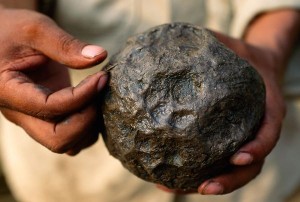Maya Aztec Rubber?
So you think rubber is a recent invention? Think again…

Ancient civilizations in much of Mexico and Central America were making different grades of rubber 3,000 years before Charles Goodyear “stabilized” the stuff in the mid-19th century, new research suggests.
The Aztec, Olmec, and Maya of Mesoamerica are known to have made rubber using natural latex—a milky, sap-like fluid found in some plants. Mesoamerica extends roughly from central Mexico to Honduras and Nicaragua
Source: Aztec, Maya Were Rubber-Making Masters?
Ancient rubber makers harvested latex from rubber trees and mixed it with juice from morning glory vines, which contains a chemical that makes the solidified latex less brittle.
By mixing up rubber using different proportions of the two ingredients, researchers at the Massachusetts Institute of Technology found that tweaking the formula led to rubber products with different properties.
Some of the rubber came out more bouncy, suggesting it may have been used to make balls for the legendary Mesoamerican ball games.
As described in ancient Maya texts, ball games often had religious meaning—pitting good against evil. It’s thought the ball games sometimes ended in human sacrifice, most famously in ritual decapitation.
Other latex-to-morning glory proportions created more durable rubber, such as what might have been used in Aztec rubber sandals, which were described by Spanish conquistadors but have never been found by archaeologists.
A 50-50 blend of morning glory juice and latex created rubber with maximum bounciness, while a 75-25 mix of latex and morning glory made the most durable material.
Latex a “Funky White Liquid”
The initial discovery of rubber from latex and morning glory isn’t so far-fetched, noted study co-author Michael Tarkanian, a researcher with MIT’s Center for Materials Research in Archaeology and Ethnology.
Morning glory plants tend to grow near rubber trees, and both plants were considered sacred in several Mesoamerican cultures. Morning glory, for example, was also used in religious ceremonies for its hallucinogenic properties.
To make their re-creations as accurate as possible, Tarkanian and colleague Dorothy Hosler harvested latex from rubber trees and juice from morning glory vines growing in Mexico.
The first challenge was getting the ingredients back to the lab. Latex isn’t regulated by U.S. Customs, and so there are no official papers for carrying it into the country, Tarkanian explained, “which is a problem when you’re bringing this funky white liquid across the border in Nalgene bottles.”
Once safely back in the U.S., the researchers met a new hurdle: The latex needed to be warm.
“The process always worked in Mexico, but not in the air-conditioned labs at MIT,” Tarkanian said. When the mixture was too cold, the molecules simply didn’t bond.
Today most rubber is treated through a process called vulcanization, which cooks liquid latex with sulfur to increase strength and elasticity.

Leave a Reply
Want to join the discussion?Feel free to contribute!